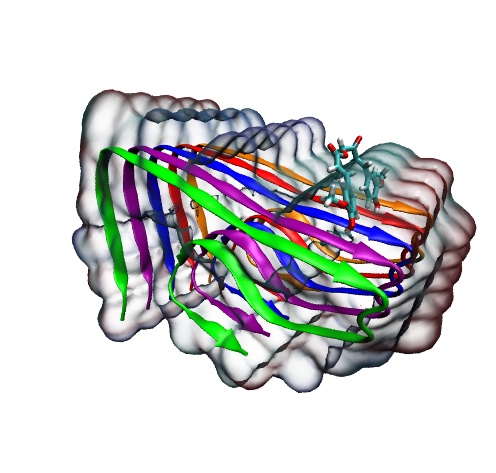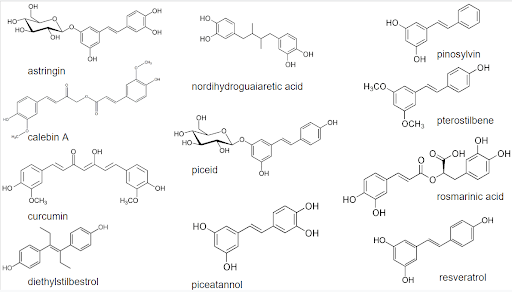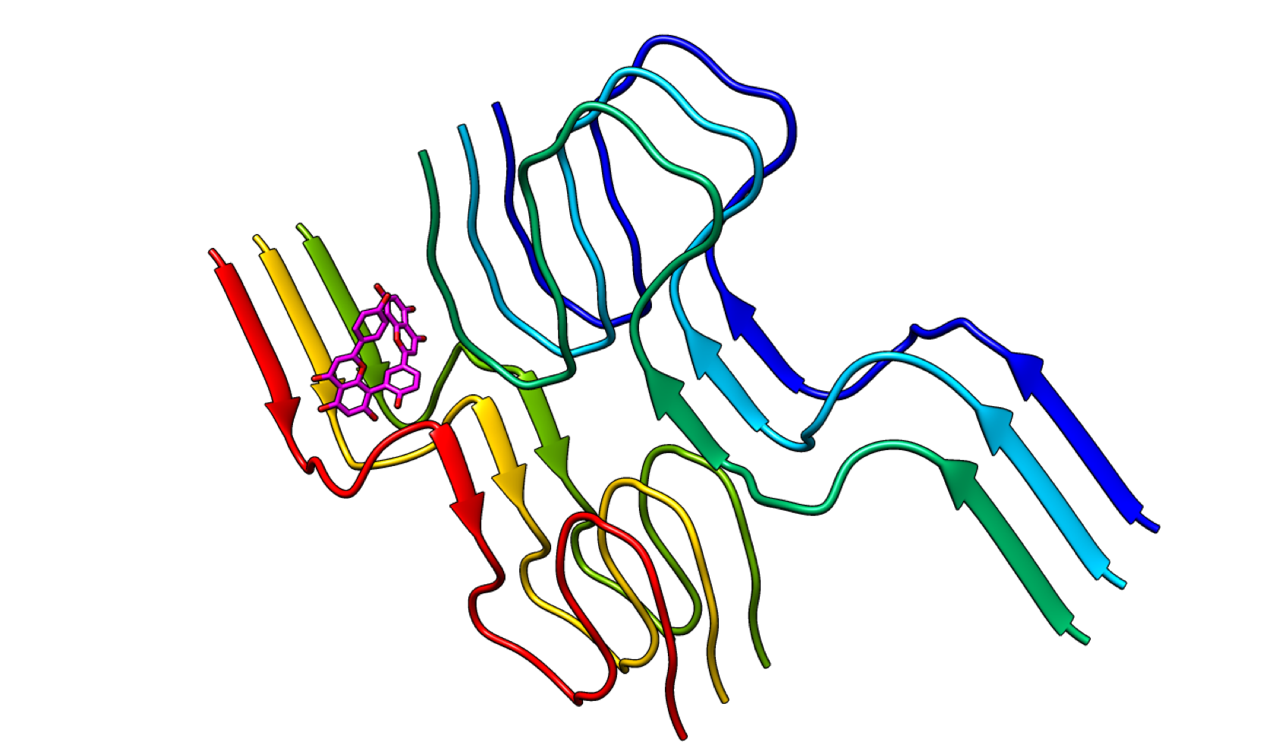Amyloid β Project
Alzheimer’s Disease (AD) is the most common cause of dementia and the sixth leading cause of death in the US (Gaugler et al. 2019). The true cause of AD is still unknown, however, there are certain proteins which aggregate in the brain of AD patients and are thought to cause disruptions between neurons causing cell death (Gorman 2008). One of these proteins, includes Amyloid Beta. Within this project, we are looking for potential small molecules that will aid in the disaggregation of the fibrils. We are specifically looking at a class of molecules, polyphenols, used by our collaborator, Dr. Brittany Hagenhoff who heads a bioanalytical lab at Truman State. The Hagenhoff lab is also looking at how a specific motif, the glycine zipper, which occurs multiple times within the amyloid beta structure, contributes to the stability and aggregation of the fibrils. Thus we are running simulations of specific sections of the amyloid beta structure that include the specific motif of interest and comparing the results.
Current Members
Hannah Zimmerman, Charan Dyavanapalli, Christine Chen, John, Sylvara, Ella Sowle, Sarah Harris
Past Members
Stephen Plassmeyer, Peter Windsor, Dominic Mattock, Conaire Bradfield, Alex Platt, Jackson Dyroff, Rachel Stanfield
References:
Gaugler, J., James, B., Johnson, T., Marin, A., & Weuve, J. (2019). 2019 Alzheimer’s disease facts and figures. Alzheimers & Dementia, 15(3), 321-387.
Gorman A. M. (2008). Neuronal cell death in neurodegenerative diseases: recurring themes around protein handling. Journal of cellular and molecular medicine, 12(6A), 2263–2280. doi:10.1111/j.1582-4934.2008.00402.x




